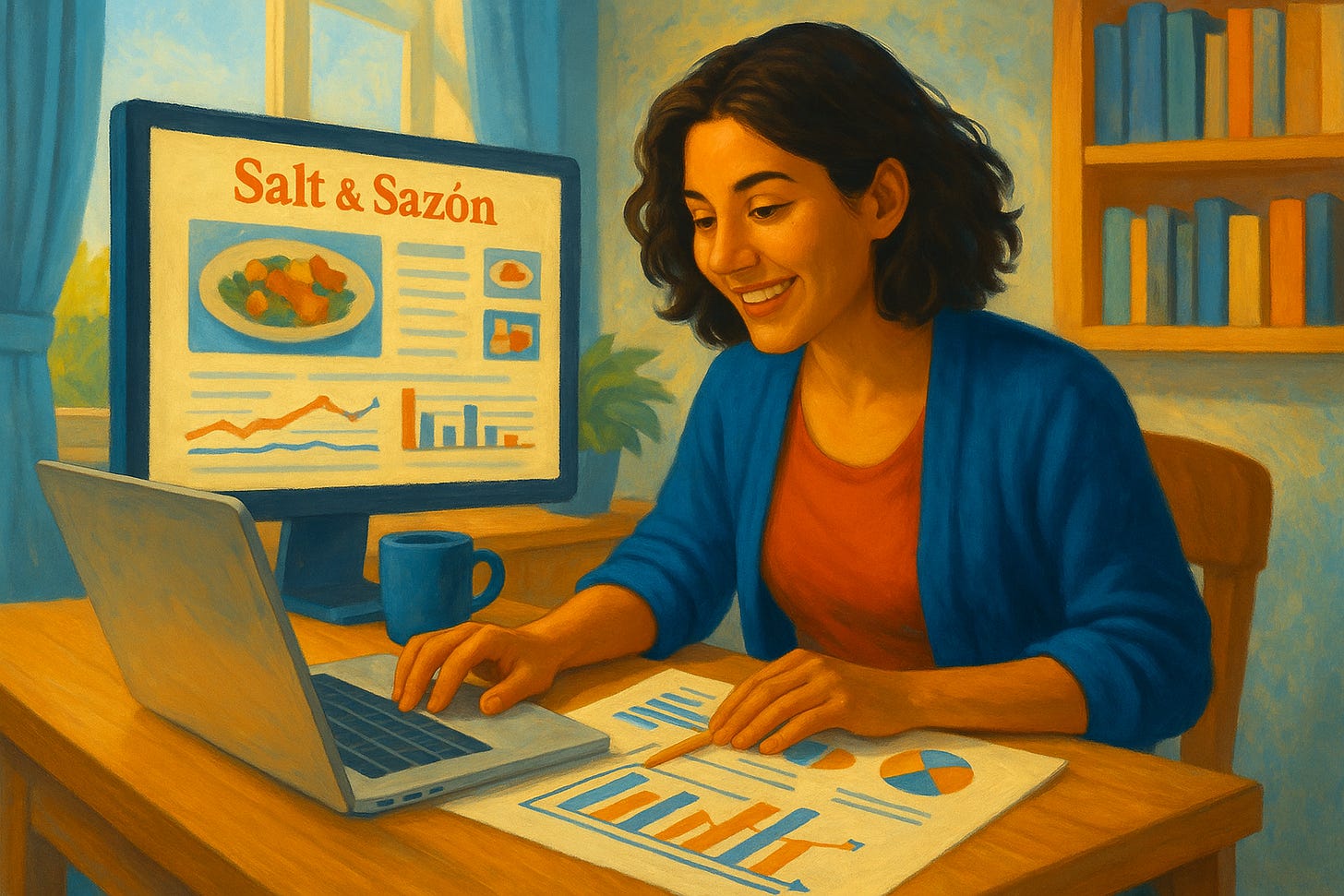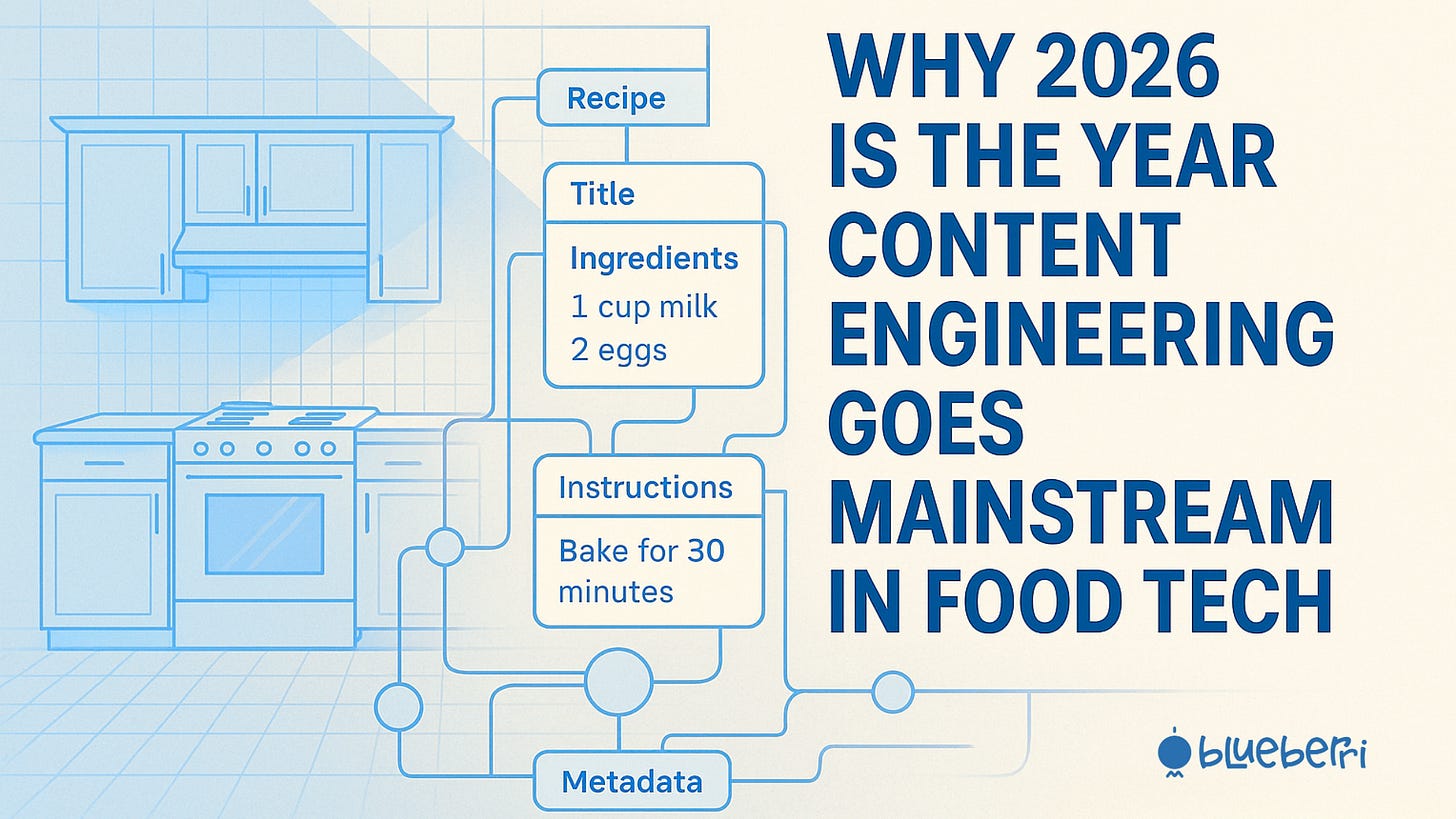The Food Blog SEO Reset Coming in 2026
The year search starts to understand your content.
Every few years, the web quietly rewires itself and food blogs feel it first.
In 2026, that shift won’t come from an algorithm update or a viral platform.
It’ll come from a fundamental reset in how search engines, discovery tools, and platforms understand recipes.
Let’s call it what it is: the Food Blog SEO Reset.
From Keywords to Context
For a decade, recipe SEO revolved around keywords and backlinks.
But the search results of 2026 won’t just rank your blog, they’ll summarize it.
Google’s AI Overviews are already turning search into conversation.
And Pinterest just announced something even bigger: Pinterest Assistant, an AI-powered shopping guide that lets users say things like “show me vegetarian dinners under $20” and get curated, shoppable results across recipes, cookware, and products.
Search is no longer about pages; it’s about paths.
Those who understand structure, intent, and context will define what visibility looks like next year.
The Shift No One Was Ready For
Every conference I attended in 2025, the same frustration kept surfacing.
Creators were doing everything right, yet their traffic graphs looked like ski slopes.
The reason?
Search itself is changing.
Google’s AI Overviews now answer questions directly in search results, pulling from structured data instead of headlines.
Pinterest Assistant interprets user intent, “quick vegetarian dinner under $20” — and returns curated, shoppable results that blend recipes, products, and lifestyle content.
Search isn’t about keywords anymore, it’s about context and structure.
And for most bloggers, that means rebuilding the foundation.
Marisol and the Salt & Sazón Reset

Marisol’s food blog, Salt & Sazón, is the kind of site that built the early web: rich storytelling, beautiful photography, and loyal readers who still email her for her grandmother’s arroz con gandules recipe every Christmas.
But in early 2025, her traffic collapsed.
She hadn’t changed anything — and that was the problem.
When she began reviewing her content, the issue became clear:
Her recipes had schema, but not the right schema.
Images were too small for Google Discover.
Ingredients were listed as plain text, not structured data.
Categories like “Easy Dinners” and “Family Meals” overlapped but weren’t defined semantically.
Affiliate links had no structured product data connecting them.
In 2019, that setup was fine.
In 2026, it’s invisible.
Platforms like Google and Pinterest now use metadata context to decide which recipes appear in overviews, summaries, and shopping flows.
If your structure doesn’t explain your content, it doesn’t exist.
So, Marisol rebuilt.
She updated her recipe schema with nutrition info, meal type, and “suitable for diet” tags.
She added descriptive alt text, 1200×1200 featured images, and cleaned up her categories, “Dinner,” “One-Pot Meals,” “Puerto Rican Classics.”
She stopped optimizing for keywords and started optimizing for intent, grouping content into cooking journeys like weeknight dinners, pantry-based meals, and holiday traditions.
Then she integrated her monetization data.
Her affiliate links were restructured with product schema, and she linked cookware recommendations directly to her recipes.
Within eight weeks, Salt & Sazón began to reappear, first in Pinterest searches, then in AI Overviews.
Her Weeknight Mofongo Bowls recipe even ranked as a top result for “budget-friendly dinner under $15” and appeared in Pinterest’s new shoppable feed.
Traffic didn’t “bounce back.”
It evolved.
Marisol’s visibility now stretches across platforms, her recipes discovered not just on her site, but wherever structured content lives.
The Blueberri Stack
Pinterest’s newest feature, Pinterest Assistant, is quietly rewriting the rules of food discovery.
This AI-powered tool allows users to describe what they want, like “quick vegetarian dinner under $20” — and then see curated results that mix recipes, cookware, and shoppable items.
It’s search, but humanized.
Behind the scenes, Pinterest Assistant reads structured data from recipe schema and product catalogs to match content with intent. That means recipe metadata, dietary tags, ingredient lists, and even affiliate product markup all become signals for visibility.
For creators, this update isn’t optional, it’s a glimpse of what’s next:
a world where recipe blogs act as structured data sources, not just inspiration hubs.
If you’re not structuring your recipe content for both search and shop, platforms like Pinterest Assistant will quietly pass you by.
Signals from the Platforms
Google AI Overviews → Prioritizing schema completeness, authorship, and clarity.
Pinterest Assistant → Merging recipe, product, and intent data in real-time discovery.
TikTok Search & YouTube Browse AI → Linking metadata across short-form and long-form content.
Together, these shifts mark the start of contextual discoverability, where metadata is marketing.
My Predictions for 2026
Structured content becomes the new SEO currency.
Blogs without validated schema will quietly lose visibility.Recipe and product data merge.
Affiliate programs and shoppable feeds will rely on shared structured fields.AI search assistants drive discovery.
People will “ask” for meals, not “search” for them.Linked data beats backlinks.
Contextual relationships will matter more than inbound links.Creators who embrace metadata gain reach without burnout.
Structure replaces hustle.
What It Means for You
If you run a food blog, this is the moment to:
Audit your schema and taxonomy. Make sure your recipe structure fully describes your content.
Refresh your visual metadata. Use large, descriptive images (1200×1200 px or more).
Integrate product markup early. Pinterest Assistant and Google Shopping read the same fields.
Re-map content to user intent. Think in journeys, not keywords — what problem does each recipe solve?
You don’t need to predict every algorithm change.
You just need to make your content understandable to both humans and machines.
What’s Next
I’ll break down each of these predictions in upcoming issues of The Future of Food Content 2026 series.
And if you’re a food creator, I hope you’re on LinkedIn to keep a finger on the pulse of how to increase your business's staying power.
(But more on that in a future issue.)
For now, check out the first part of the series:
Why 2026 Is the Year Content Engineering Goes Mainstream in Food
Ready to Future-Proof Your Content?
If your traffic feels unpredictable or your structure hasn’t been updated since 2020, it’s time for an audit. My Food Tech Strategy Sessions help creators understand how search and discovery systems interpret recipe data, and what to fix first.
Let’s rebuild your foundation before the reset hits.
A Quick Note About My Book

We’re heading into an exciting season, and yes, there’s big news coming about the book soon. If you want early access, behind-the-scenes updates, and a chance to be a beta reader, join my Yellow Hoodie Reader Group. It’s free, no spam, just real conversations and sneak peeks.
Join the Yellow Hoodie Reader Group
Structured content isn’t going anywhere, and neither am I.
Let’s reimagine what’s possible, one recipe at a time.
Your friend in food,
Sandie



